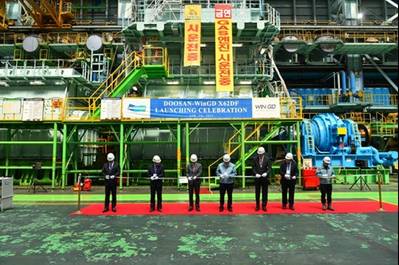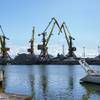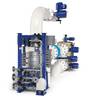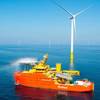On April 5, 2016 Winterthur Gas & Diesel (WinGD), together with Doosan Engine Co., Ltd demonstrated the first low-speed low-pressure Wärtsilä six-cylinder X62DF (W6X62DF) engine for a commercial application.
The event took place at Doosan’s works in Changwon, Korea and the W6X62DF engine is also the first sold X-DF engine for the new generation of very large LNG carriers. It is currently under test by Doosan before delivery and is one of a pair that will power the first of two 180,000 cbm LNG carriers being built by Samsung Heavy Industries Co., Ltd (SHI) in Korea for SK Shipping Co., Ltd and Marubeni Corporation. The vessels are due to operate on long-term charter to Total S.A. of France.
In addition to witnessing the W6X62DF running under a number of load and fuelling conditions, visitors to the X-DF powering the future event also saw validation of its engine control features, tuning, economy and emissions. Key aspects confirmed included the engine’s design fuel consumption, its Tier III NOx emissions compliance in gas mode without any additional exhaust treatment – and its capability to run stably in a wide operating window.
At a technical seminar following the W6X62DF demonstration at Changwon, WinGD and Doosan also stressed the cost benefits of X-DF technology with low-pressure gas admission. Reductions in capital expenditure (CAPEX) of 15 to 20 percent are possible compared to other low-speed dual-fuel engine technology, as validated on the new 180,000 cbm LNG carriers. This results from the substantially simpler and lower cost LNG fuel gas handling system needed for gas admission at pressure below 16 bar. On the operating expenditure (OPEX) side, gains are expected, especially for LNG carriers, since no high-pressure gas compression system external to the engine is needed to enable the use of NBOG (Natural Boil-off Gas).
A further advantage, as underlined during the W6X62DF demonstration run, is that WinGD X-DF technology allows stable operation on gas across the entire load range from 5 to 100 percent, so that there is no need to increase liquid fuel injection under any situation where sufficient gaseous fuel is available. Moreover, at around only 1 percent of the total heat released during combustion, pilot fuel consumption is lower than with other low-speed dual-fuel engine technology.
During the technical seminar WinGD also announced that a “Fuel- sharing” feature will be available on X-DF engines later in 2016. This feature aims to give vessel operators broad flexibility to use liquid and gaseous fuel at the same time if economically viable at a given time.
The first engine employing WinGD’s X-DF technology with low-pressure gas admission, an RT‑flex50DF, has already successfully completed Classification Society type approval testing (TAT).














